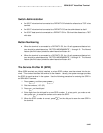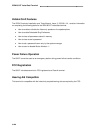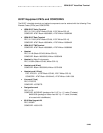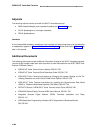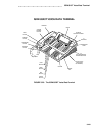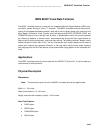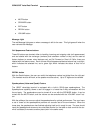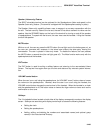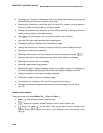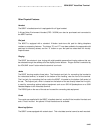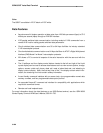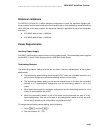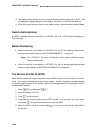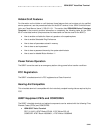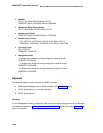
ISDN 8520T Voice/Data Terminal
Speaker (Listen-only) Feature
The 8520T voice/data terminal can be optioned for the Speakerphone (listen and speak)
or
the
Speaker (listen-only) feature. (The terminal is shipped with the Speakerphone setting in place.)
The Speaker (listen-only) capability allows a user to engage in a one-way conversation with the
far-end. The user can only listen to the far-end; the user is not able to transmit his voice over the
speaker. Use the SPEAKER button on the front of the terminal for turning on and off the speaker
or speakerphone. To speak with the far-end, the user must use the handset. Lifting the handset
turns off the speaker.
MUTE button
While on a call, the user can press the MUTE button (the red light next to the button goes on), so
the user can converse with someone in the same room without the other party hearing the
conversation. The user is placed in listen-only mode. To disable the feature, the user presses
the MUTE button a second time (the red light goes off). The Mute function works only with the
speakerphone and the handset.
EXIT button
The EXIT button is used for exiting a softkey feature and returning to the user-selected Home
Screen. The top two lines again show you the time and date and any relevant system informa-
tion.
VOLUME control button
When the user is on a call using the speakerphone, the VOLUME ‘‘arrow’’ button raises or lowers
the volume on the speakerphone. Likewise, when the user is on a call using the handset, the
VOLUME control button changes the receive level of the handset. When the handset is on-hook
and the speakerphone is off, this button raises or lowers the ringer volume or tones such as the
confirmation or error tone.
Softkeys
The 10 unlabeled buttons located on both sides of the display correspond to words on the display
screen. Softkeys are used along with display control keys to access the following features:
Setting the clock
Setting the speakerphone
Adding, editing, and deleting the numbers and associated names (and optional group
names) in the voice terminal Directory
3-435



